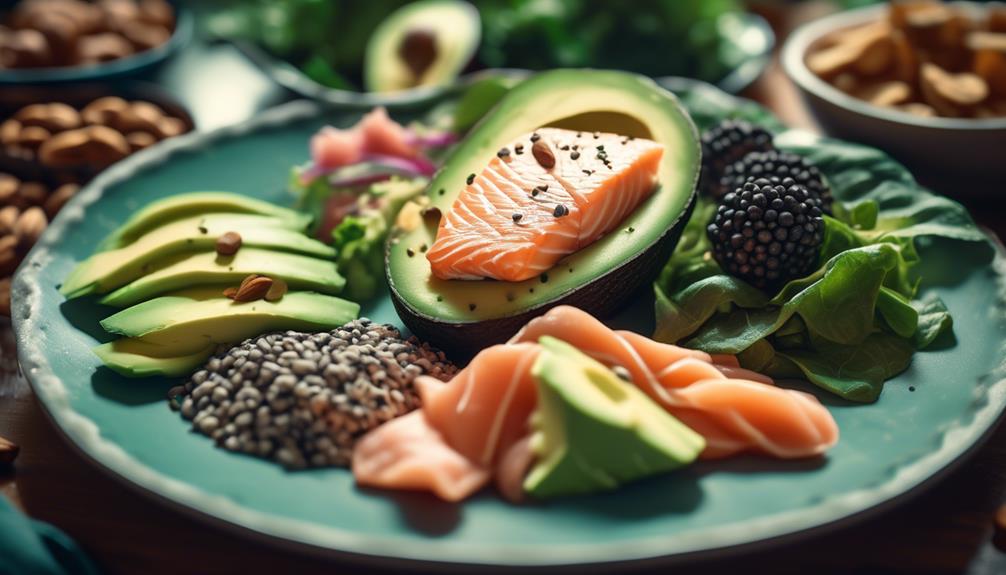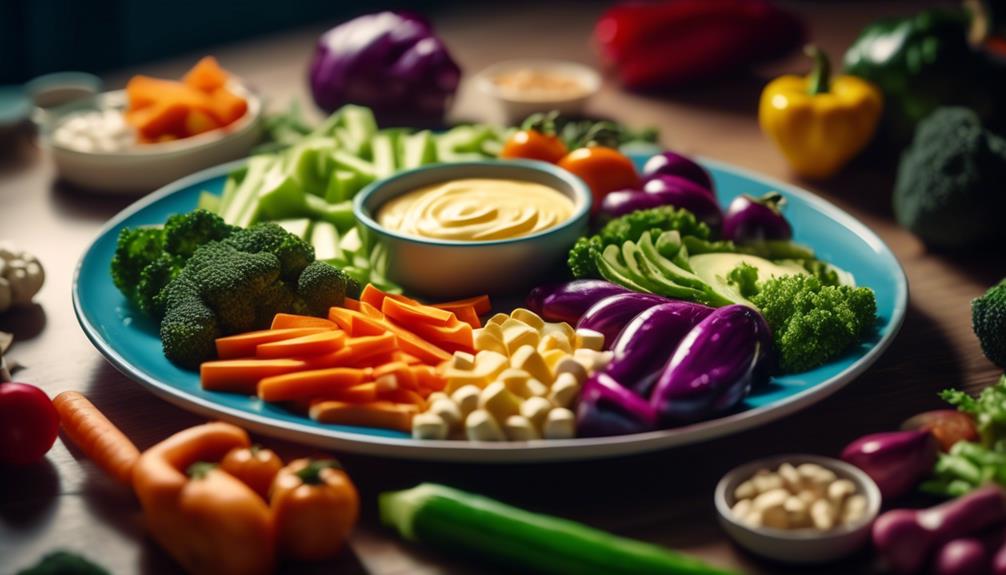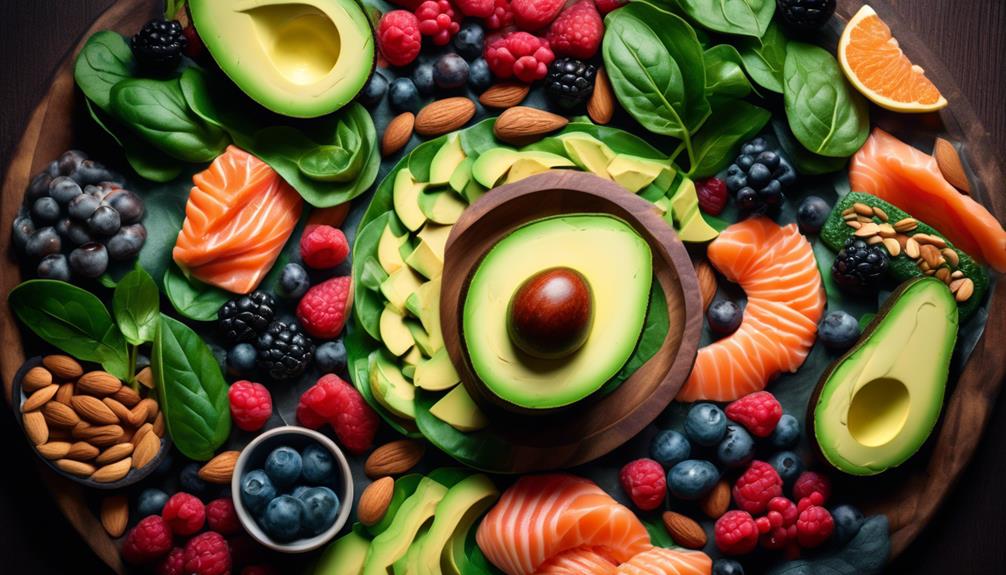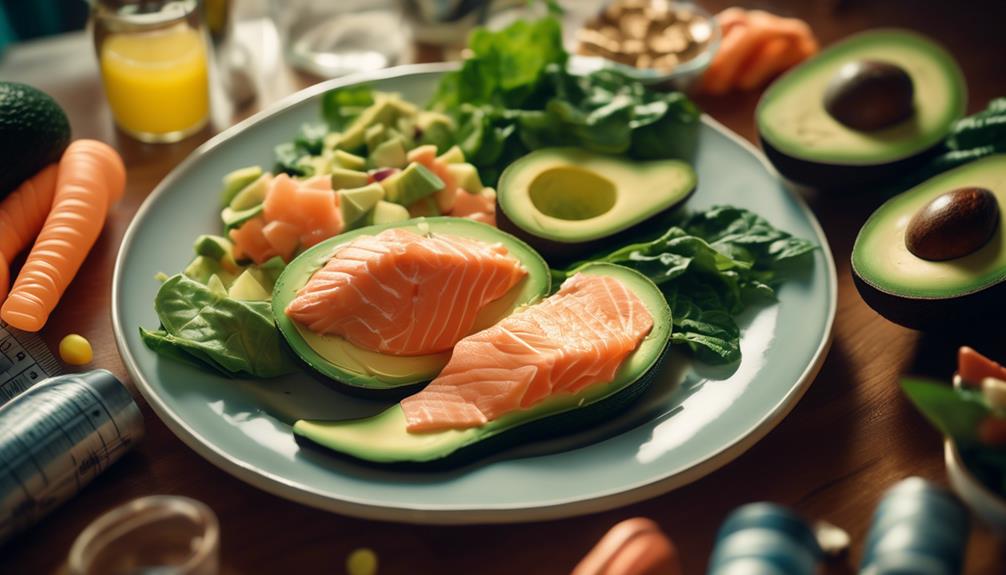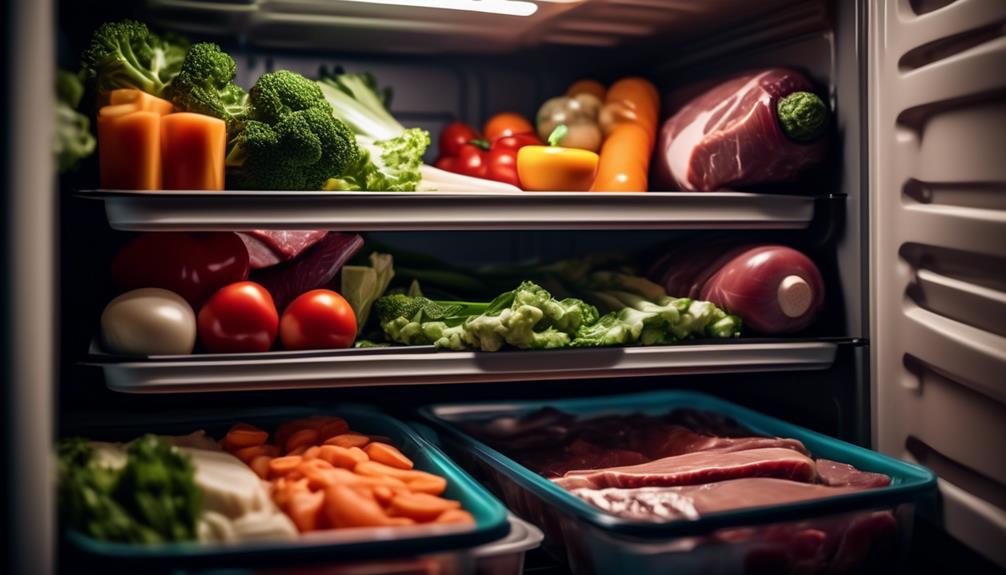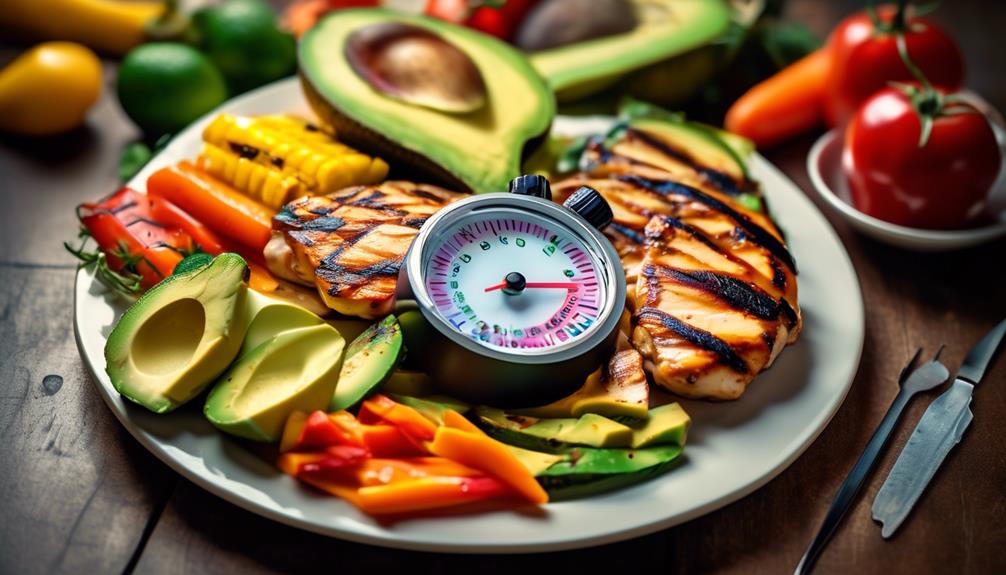So, you've decided to embark on the keto journey, but those hunger pangs are making you question your commitment.
Fear not, for we have some effective hacks to curb your cravings and keep you on track.
We all know how tempting it is to reach for that bag of chips or dive headfirst into a pint of ice cream, but with these keto-friendly strategies, you'll be able to conquer your hunger in no time.
Stay tuned as we unveil nine powerful techniques that will leave you feeling satisfied and in control of your cravings.
Opt for High-Fiber Foods
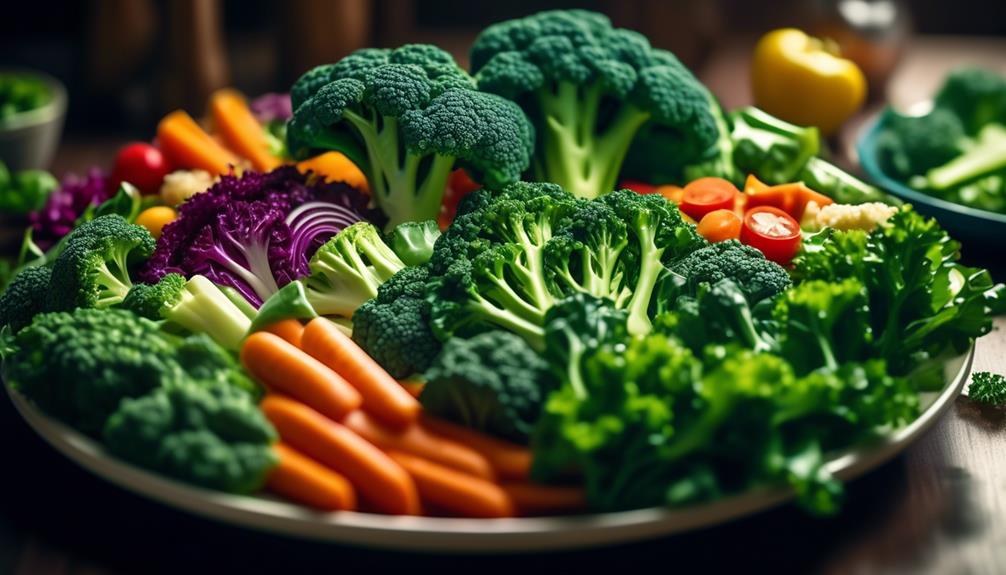
To curb hunger on a keto diet, make sure to incorporate high-fiber foods into your meals. High fiber foods offer numerous benefits, including aiding in hunger control. When consumed, fiber absorbs water and forms a gel-like substance in your digestive system, which slows down the emptying of your stomach and promotes feelings of fullness. This can help you stay satisfied for longer periods and prevent overeating.
Additionally, high-fiber foods tend to have a lower energy density, meaning they provide fewer calories per gram. This allows you to eat larger volumes of food without consuming excessive calories, which can be helpful when trying to maintain a caloric deficit for weight loss.
Some examples of high-fiber foods that are suitable for a keto diet include non-starchy vegetables like broccoli, spinach, and cauliflower, as well as avocados, chia seeds, and flaxseeds. These foods aren't only rich in fiber but also packed with essential vitamins, minerals, and healthy fats.
Incorporating high-fiber foods into your meals can be as simple as adding a side of steamed broccoli or spinach to your main dish or including a tablespoon of chia seeds in your morning smoothie. By doing so, you can effectively curb hunger and support your overall keto diet goals.
Increase Your Protein Intake
To curb hunger on the keto diet, increasing your protein intake is key. Protein is known for its satiating effects, helping you feel fuller for longer.
Incorporate protein-rich keto foods like lean meats, eggs, and dairy products into your meals to keep hunger at bay and stay on track with your weight loss goals.
Protein for Satiety
Increasing your protein intake is a proven way to enhance satiety on a keto diet. Protein not only keeps you feeling full and satisfied, but it also has other benefits such as increased metabolism and improved muscle maintenance.
Here are three strategies to help you incorporate more protein into your keto diet:
- Prioritize protein-rich foods: Make sure to include sources like lean meats, poultry, fish, eggs, and dairy products in your meals.
- Opt for protein snacks: Choose snacks that are high in protein, such as Greek yogurt, cottage cheese, or a handful of nuts, to keep you feeling satisfied between meals.
- Use protein supplements: Consider adding protein powder to your shakes or smoothies to increase your protein intake, especially if you struggle to meet your protein needs through food alone.
Protein-Rich Keto Foods
Incorporating protein-rich keto foods into your diet is an effective way to increase your protein intake and enhance satiety. High protein snacks are a great option for those following a ketogenic diet. They can help keep you feeling full and satisfied between meals, preventing overeating and snacking on unhealthy foods.
Some examples of high protein snacks that are also keto-friendly include hard-boiled eggs, beef jerky, and Greek yogurt. These snacks not only provide a good amount of protein but also contain essential nutrients such as vitamins and minerals.
Additionally, if you're looking for a convenient way to increase your protein intake, you can consider using keto-friendly protein powders. These powders can be added to smoothies or mixed with water for a quick and easy protein boost.
Stay Hydrated Throughout the Day

To curb hunger on the keto diet, staying hydrated throughout the day is essential. Water can help control your hunger by filling up your stomach and reducing cravings.
Additionally, staying hydrated has numerous benefits for your overall health, such as aiding digestion and supporting proper brain function.
Implementing hydration strategies, like carrying a water bottle with you at all times and setting reminders to drink throughout the day, can help you stay on track with your keto goals.
Water for Hunger Control
Stay hydrated throughout the day by drinking an adequate amount of water to help curb hunger on a keto diet. Water has several benefits for hunger control, making it an essential tool in your weight loss journey.
Here are three reasons why staying hydrated can help you control your hunger:
- Increased satiety: Drinking water before meals can help you feel fuller and reduce your overall calorie intake.
- Improved digestion: Staying hydrated promotes healthy digestion, preventing digestive issues that can lead to increased hunger.
- Thirst vs. hunger: Sometimes, we mistake thirst for hunger. By staying hydrated, you can differentiate between the two and avoid unnecessary snacking.
To maintain proper hydration, develop healthy drinking habits by carrying a water bottle with you throughout the day and setting reminders to drink water regularly.
Benefits of Staying Hydrated
Staying hydrated throughout the day has numerous benefits that can help you control hunger on a keto diet.
One of the main benefits of hydration is its role in appetite regulation. Drinking enough water can help you feel full and satisfied, reducing the urge to snack or overeat.
Additionally, staying hydrated supports proper digestion and nutrient absorption, ensuring that your body efficiently processes the food you consume. Water also aids in the breakdown and elimination of waste products, which can contribute to overall digestive health.
Furthermore, adequate hydration is essential for maintaining optimal cognitive function, as dehydration can lead to fatigue, difficulty concentrating, and impaired decision-making.
Hydration Strategies for Keto
When it comes to staying hydrated on a keto diet, incorporating effective strategies throughout the day is key. Proper hydration is essential for overall health and can also help you manage hunger and cravings. Here are three hydration techniques to keep in mind:
- Drink plenty of water: Water is the best and most natural way to stay hydrated. Aim to drink at least 8 cups (64 ounces) of water per day. Keep a water bottle with you to remind yourself to drink throughout the day.
- Add electrolytes: On a keto diet, you may need to replenish electrolytes like sodium, potassium, and magnesium. Consider adding electrolyte-rich foods like avocados, leafy greens, and nuts, or using electrolyte supplements to ensure proper hydration.
- Monitor urine color: A simple way to gauge your hydration level is by checking the color of your urine. Ideally, it should be light yellow or clear. If it's darker, you may need to increase your water intake.
Incorporate Healthy Fats Into Your Meals
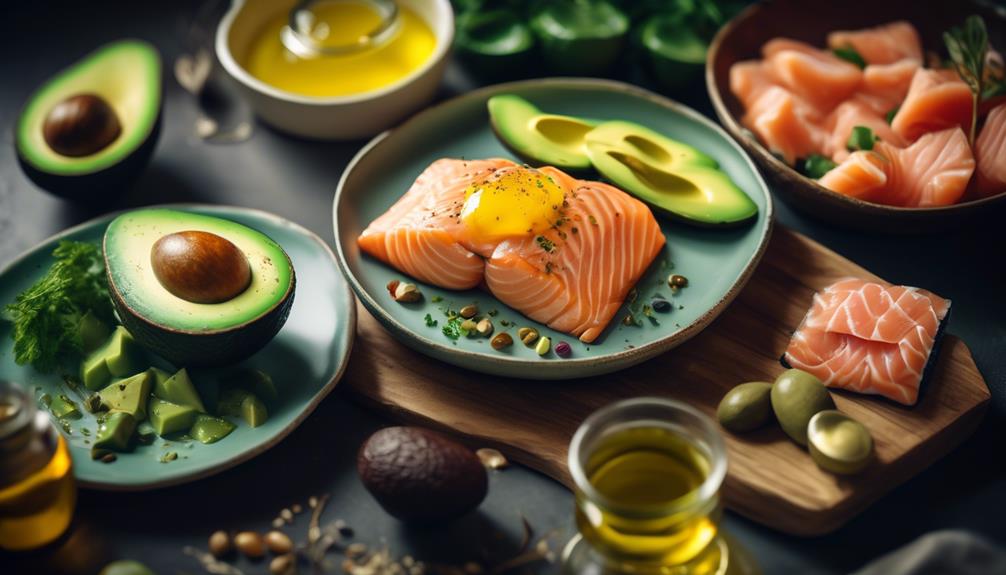
Incorporating healthy fats into your meals is a key strategy for curbing hunger on the keto diet. Healthy fats, such as avocados, nuts, and olive oil, provide numerous benefits that can help keep you feeling satisfied and full for longer periods of time.
One of the main benefits of incorporating healthy fats into your meals is their ability to slow down digestion. Unlike carbohydrates, which are quickly broken down and digested, fats take longer to process in the body. This means that when you consume meals that are higher in healthy fats, your body will take longer to digest them, resulting in a longer-lasting feeling of fullness.
To incorporate healthy fats into your meals, consider meal prepping. This involves preparing your meals in advance, ensuring that you have a variety of healthy fats readily available. For example, you can roast a batch of nuts or seeds and portion them into snack-sized bags for easy grab-and-go options. You can also make a big batch of guacamole or homemade salad dressing using olive oil, which can be used throughout the week to add healthy fats to your meals.
Incorporating healthy fats into your meals is a simple and effective way to curb hunger on the keto diet. By including foods like avocados, nuts, and olive oil, you can enjoy the benefits of sustained fullness while maintaining a healthy and satisfying eating plan.
Practice Intermittent Fasting
To effectively curb hunger on the keto diet, consider practicing intermittent fasting. Intermittent fasting is a eating pattern that cycles between periods of fasting and eating. It has been shown to have several benefits for both weight loss and overall health.
Here are three benefits of intermittent fasting:
- Weight loss: Intermittent fasting can help you lose weight by reducing calorie intake and increasing fat burning. When you fast, your body starts using stored fat for energy, leading to weight loss.
- Improved insulin sensitivity: Intermittent fasting has been found to improve insulin sensitivity, which is important for regulating blood sugar levels. This can help prevent insulin resistance and reduce the risk of type 2 diabetes.
- Enhanced autophagy: Autophagy is a process in which your body breaks down and recycles old and damaged cells. Intermittent fasting has been shown to promote autophagy, which can have anti-aging and disease-fighting benefits.
When practicing intermittent fasting, there are different schedules you can follow. One popular method is the 16/8 schedule, where you fast for 16 hours and have an 8-hour eating window. Another option is the 5:2 diet, where you eat normally for 5 days and restrict your calorie intake to 500-600 calories for 2 days.
Incorporating intermittent fasting into your keto diet can help you curb hunger, promote weight loss, and improve overall health.
Choose Low-Carb Snacks Wisely
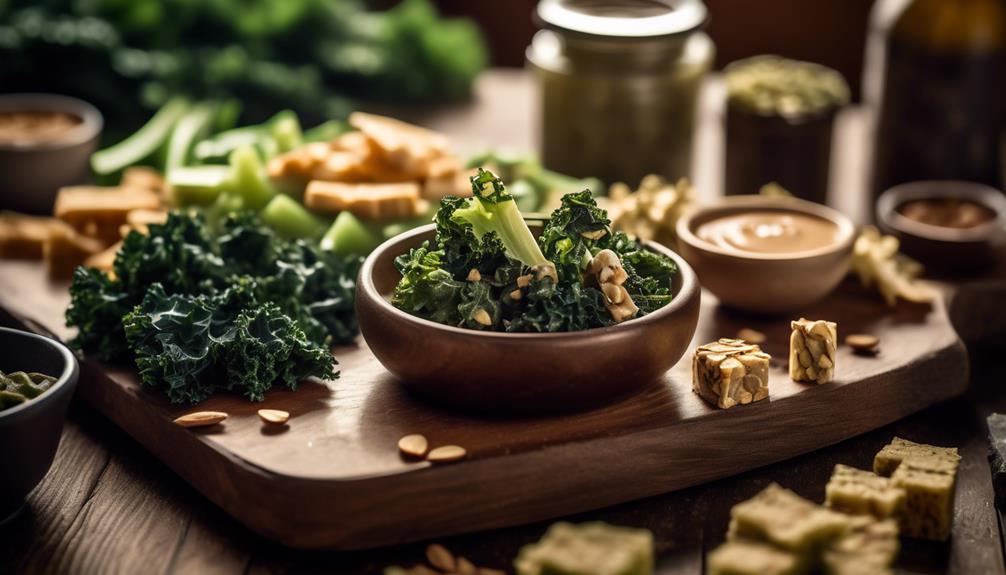
Make smart choices when selecting low-carb snacks to curb your hunger on the keto diet. It's important to find snacks that aren't only low in carbs but also provide essential nutrients to support your overall health. Here are some low carb snack ideas and healthy snacking options to consider.
- Nuts and seeds: Almonds, walnuts, and pumpkin seeds are great choices. They're packed with healthy fats, protein, and fiber, which help keep you full for longer.
- Greek yogurt: Opt for plain Greek yogurt, which is low in carbs and high in protein. Add some berries or a sprinkle of cinnamon for extra flavor.
- Hard-boiled eggs: Eggs are a fantastic source of protein and healthy fats. They're easy to prepare and make a satisfying snack.
- Cheese: Choose hard cheeses like cheddar, Swiss, or Parmesan. They're low in carbs and provide a good amount of protein.
- Veggies and dip: Snack on crunchy vegetables like celery, cucumber, or bell peppers with a side of guacamole or a low-carb dip.
Remember to pay attention to portion sizes when snacking on these low-carb options. They can be a great way to satisfy your hunger and stay on track with your keto diet.
Prioritize Nutrient-Dense Foods
When prioritizing nutrient-dense foods on the keto diet, focus on incorporating a variety of whole, unprocessed options into your meals and snacks. This will ensure that you're getting the necessary vitamins, minerals, and antioxidants to support your overall health and well-being while following the optimal macronutrient ratios for the keto diet.
To help you make informed choices, here are three nutrient-dense foods to consider:
- Leafy greens: These include spinach, kale, and Swiss chard, which are packed with essential nutrients like vitamin K, vitamin A, and folate. They're also low in carbs, making them an ideal choice for the keto diet.
- Fatty fish: Fish like salmon, mackerel, and sardines aren't only rich in omega-3 fatty acids but also provide high-quality protein. These nutrients contribute to brain health, heart health, and overall inflammation reduction.
- Avocados: Avocados are an excellent source of healthy fats, including monounsaturated fats. They also contain fiber and various vitamins and minerals. Incorporating avocados into your meals can help you feel satiated and provide essential nutrients.
In addition to prioritizing nutrient-dense foods, practicing mindful eating techniques can also help enhance your keto experience. By slowing down, savoring each bite, and paying attention to your hunger and fullness cues, you can better regulate your food intake and make healthier choices.
Use Appetite Suppressants Sparingly
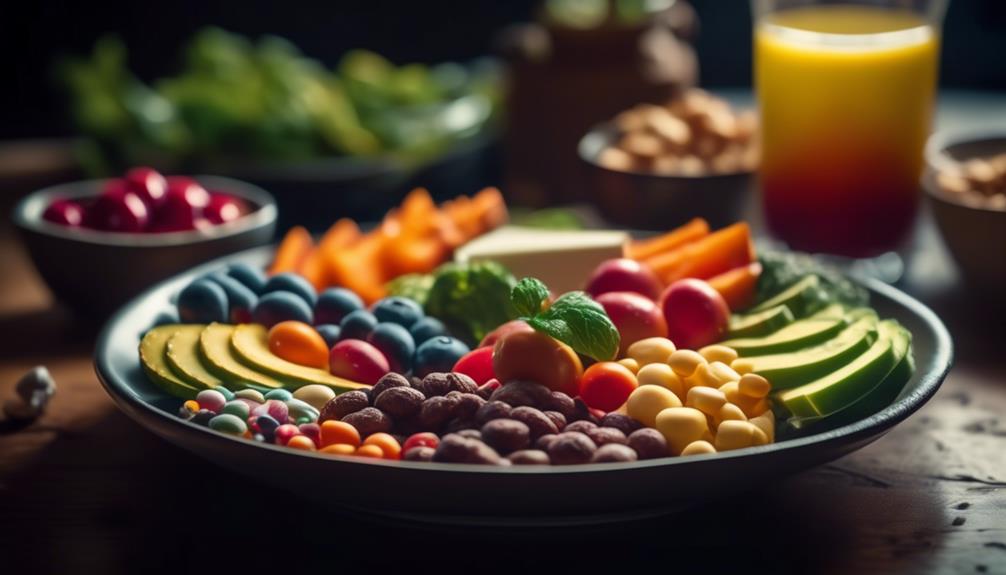
Using appetite suppressants sparingly can be a helpful strategy to manage hunger while following the keto diet. However, it's important to note that relying solely on appetite suppressants isn't a sustainable or healthy approach. Instead, consider appetite suppressant alternatives and incorporate mindful eating techniques into your routine.
When it comes to appetite suppressant alternatives, there are several natural options available. Consuming foods that are high in fiber, such as vegetables, can help you feel fuller for longer. Additionally, incorporating protein-rich foods, like lean meats and eggs, can also help curb hunger. These alternatives not only provide essential nutrients but also support your overall health.
In addition to appetite suppressant alternatives, practicing mindful eating techniques can be beneficial. Mindful eating involves paying attention to your body's hunger and fullness cues, eating slowly, and savoring each bite. By being present and mindful during meals, you can better recognize when you're satisfied, preventing overeating.
While appetite suppressants may provide temporary relief from hunger, they shouldn't be relied upon as a long-term solution. Instead, opt for natural alternatives and incorporate mindful eating techniques into your daily routine. This way, you can manage your hunger effectively while following the keto diet in a healthy and sustainable manner.
Listen to Your Body's Hunger Signals
To effectively manage your hunger while following the keto diet, it's crucial to listen to your body's hunger signals and respond accordingly. By paying attention to your hunger cues and practicing mindful eating, you can better understand your body's needs and prevent overeating. Here are three important tips to help you listen to your body's hunger signals:
- Slow down and savor your meals: Eating slowly allows your brain to register fullness and satisfaction. Take the time to enjoy each bite and chew your food thoroughly. This will help you recognize when you're actually full and prevent overeating.
- Tune in to your body's hunger and fullness levels: Before eating, take a moment to assess your hunger. Are you truly hungry or just eating out of habit or boredom? Likewise, while eating, check in with your body to gauge how full you are. Stop eating when you feel satisfied, but not overly stuffed.
- Distinguish between physical and emotional hunger: Emotional hunger often leads to mindless eating and cravings for specific comfort foods. Before reaching for a snack, ask yourself if you're truly hungry or if there's an emotional trigger behind your desire to eat.
Conclusion
Congratulations on discovering these 9 keto hacks to conquer hunger!
With high-fiber foods, increased protein intake, and hydrating wisely, you'll fuel your body for success.
Incorporating healthy fats and practicing intermittent fasting will keep you on track.
Choose low-carb snacks and nutrient-dense foods to satisfy cravings.
Remember, appetite suppressants should be used sparingly.
Most importantly, listen to your body's hunger signals and trust in your journey.
You've got this!

